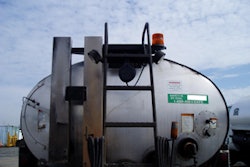Irv Blackman and Brian Whitlock
Raise your hand if your company has a qualified retirement plan (QRP). Your QRP can be a 401(k), profit-sharing plan, SEP-IRA, pension plan or any one of the many other QRPs. Listen up! Chances are this article is going to make you and your employees lots of money.
But first a little warning: Your author is a tax guy, not an investment advisor. Yet the nature of my professional work - estate planning, business succession planning and the many related areas - has allowed me to review the personal financial statements of about 1,500 business owners over 50 years of practice. You would be amazed at what I have learned over the years about my business-owner clients. This article is based on the answer to one of the questions I ask every client: "What is your average annual rate of return on your investments, including personal funds, QRP funds, excess funds in your business and other funds you control?"
The shocking answer is 80 percent earn less than the general market (measured by the DOW or S&P) average percentage growth of about 10 percent per year. About one-third only average 6.5 percent or less. But here's what's even more interesting - almost all of those in the 80 percent group do their own investing. Great business people, lousy investors.
What about the other 20 percent who, most of the time, beat the general market growth? Almost all of them had a professional money manager. When this 20 percent group used professionals to manage their QRP funds, their employees enjoyed the same investment success.
Over the years, I've done some extensive research to show you the best way to improve your and your employees' investment results. Let's start with a chart of what the impact of a better rate of return can do for your retirement nest egg over time.
The below chart shows you what happens to a single $1,000 contributed to a QRP and invested over a 36-year period (the typical length of employment time for the business owner or a long-time employee in a QRP) at various rates of return. Hold on to your chair - the differences are astounding. (Note: The chart is a simple application of the rule of 72, which tells you how long a specific amount of money takes to double, depending on the rate of return.)
You don't have to be a rocket scientist to understand the results. It's easy to see if you put about $10,000 into a QRP every year for about 36 years and earn just 10 percent per year on average (a good money manager consistently earns more), you'll have many millions of dollars by retirement age.
So why do about 80 percent of you mess up? Because you sign up your QRP with a "cookie-cutter" (CC) type plan. CC plans focus on two things that sound terrific but in practice put you in that unwanted 80 percent group: (1) low cost and (2) lots of investment choices.
I could write a small book about the pros (not many) and cons (a long list) of why a CC plan almost automatically puts you and your employees in the low-return 80 percent group. Why does this happen? Because you and your employees are expected to become investment gurus and beat the pros. A few do, but most fail. Let's face it, if your QRP has 142 (more or less) investment choices, you are locked out of every other possible investment. Worse yet, it is a rare employee or business owner who knows which of those 142 to pick in the first place or when to switch to another investment. Many employees, including the boss, are overwhelmed by the investment choices and invest their funds in cash, which is a disastrous long-term investment choice.
Think about this example: Every year about 81 percent of mutual fund managers fail to do as well as the general market (DOW and S&P). Why? They too are locked into a limited choice of investments because almost all mutual funds specialize in something. For example, some of the popular funds invest only in emerging companies, energy stocks, large-cap, small-cap and about 6,000 more funds. You want a fund or a money manager that can select any and all of the wide range of investment possibilities.
Here's the suggestion I've made to everyone who has a CC plan or is in the horrible 80 percent self-investment group: Go professional. First, hire a professional QRP consultant to create the best plan for you and your employees. Second, hire a professional money manager. Surprisingly, the costs are competitive with CC plans. They are easy to check out; just check their rate of return (after fees) for the years they have been in business.
One more point: The boss probably has the largest account in the entire QRP, so having a professional money manager to manage your account is a terrific tax-free perk. A big deal! How big? Stop for a moment and write down the balance in your account and add just a 1 percent increase in growth, on average, that your account would enjoy for each year your account might be in existence. Exciting? I invite you to call me and share your enthusiasm or ask any questions you may have. If you think you are one of the many companies that are (inadvertently) being ripped off, I have arranged for professionals who specialize in the QRP area to review your QRP and investment return potential. To get started, fax (847-674-5299) me (Irv) the following info. (1) your name, company name and address; (2) work, home and cell phone numbers (3) approximate number of employees in your QRP and (4) type of QRP.
Irv Blackman and Brian Whitlock are CPAs with Blackman Kallick Bartelstein, LLP in Chicago. Also lawyers, they specialize in business succession and wealth transfer. Call Irv or Brian at 312-207-1040, e-mail [email protected] or visit www.estatetaxsecrets.com.

















